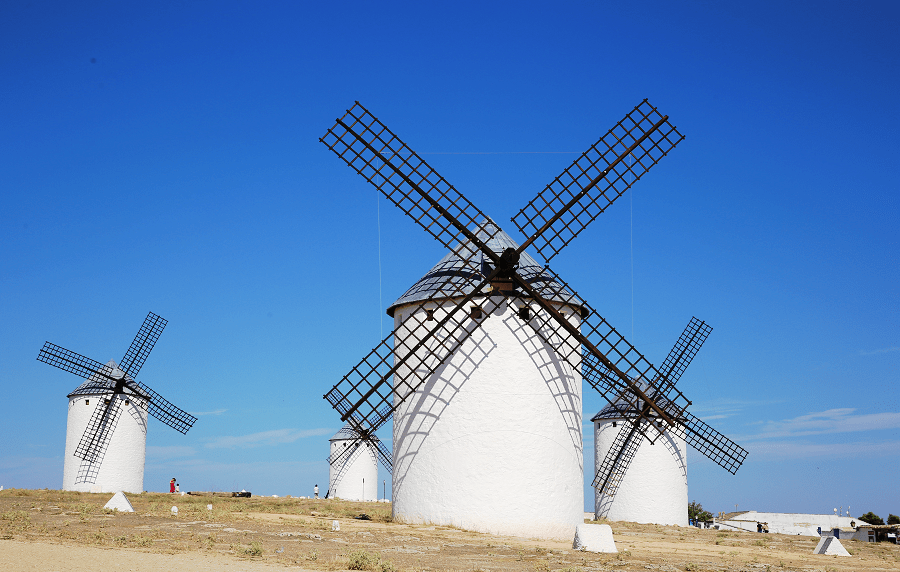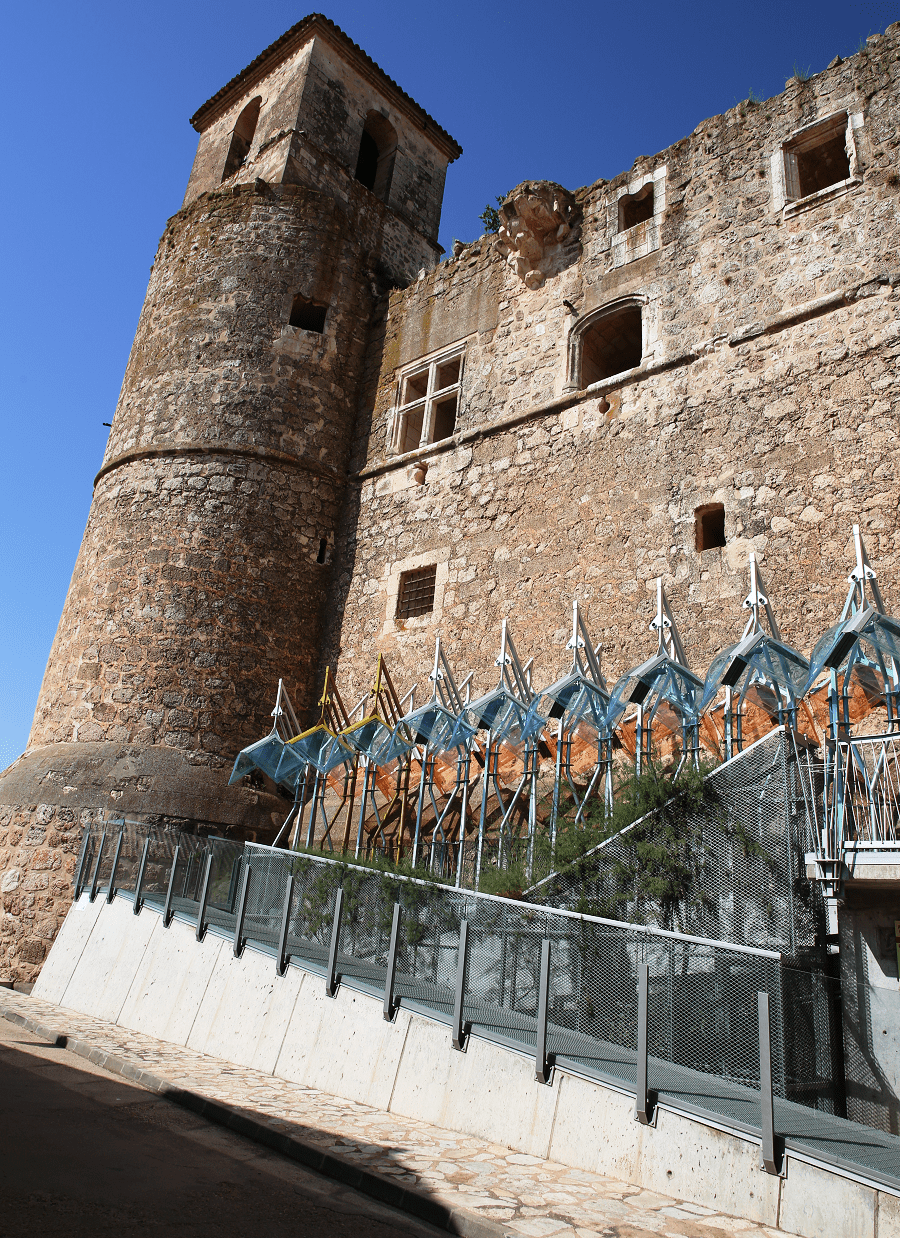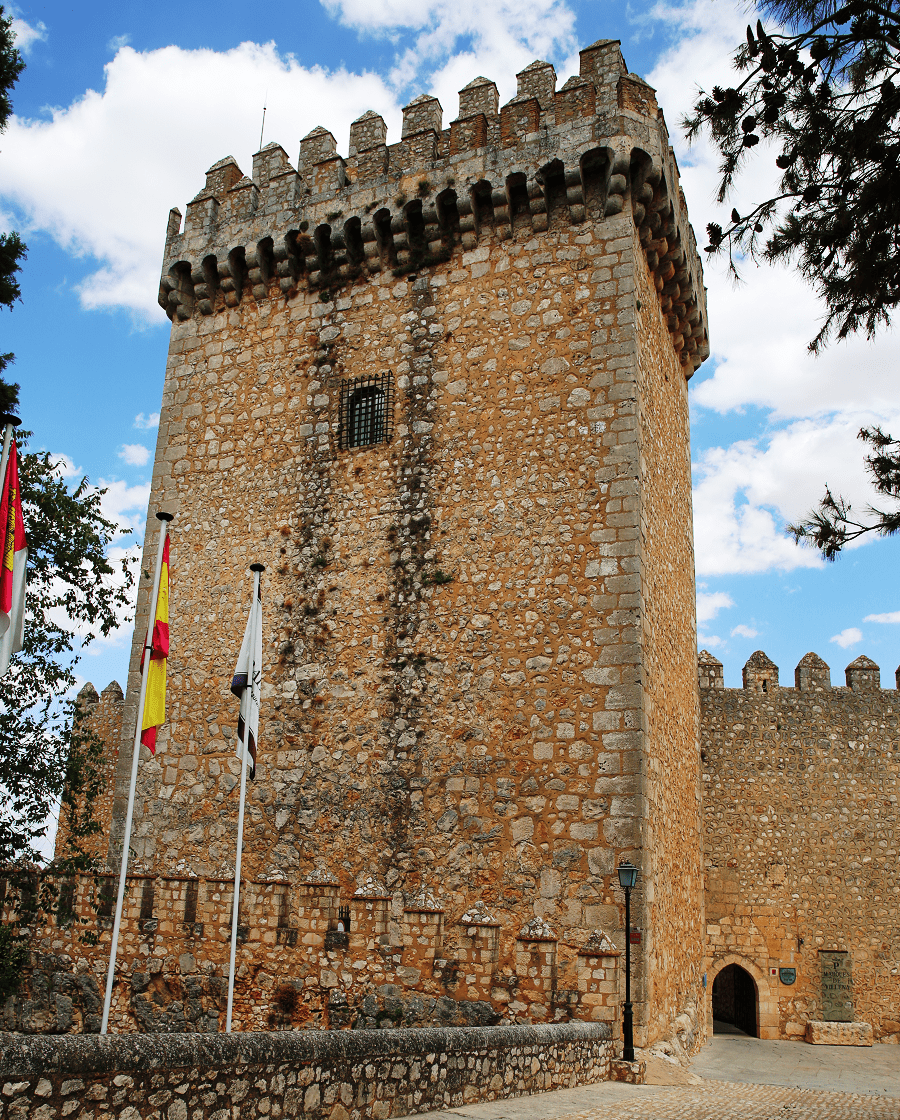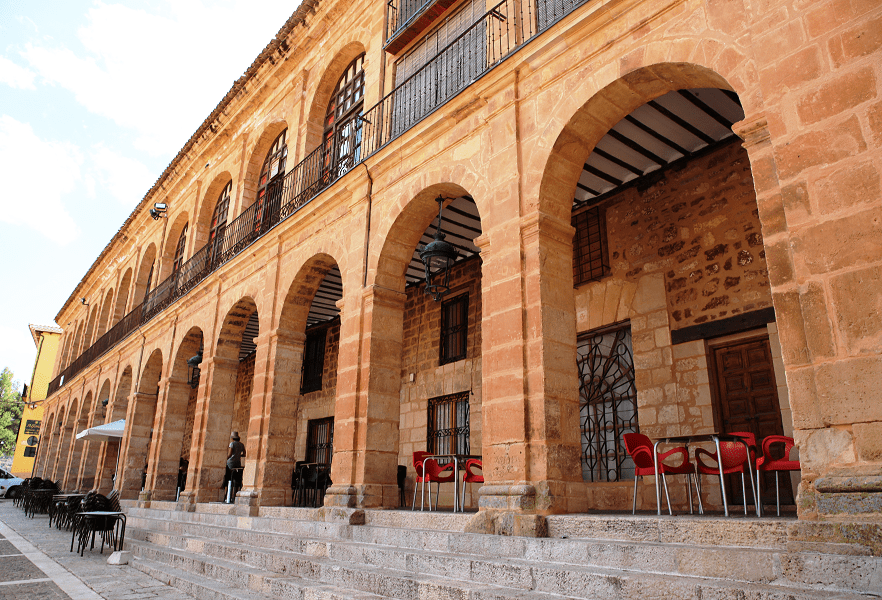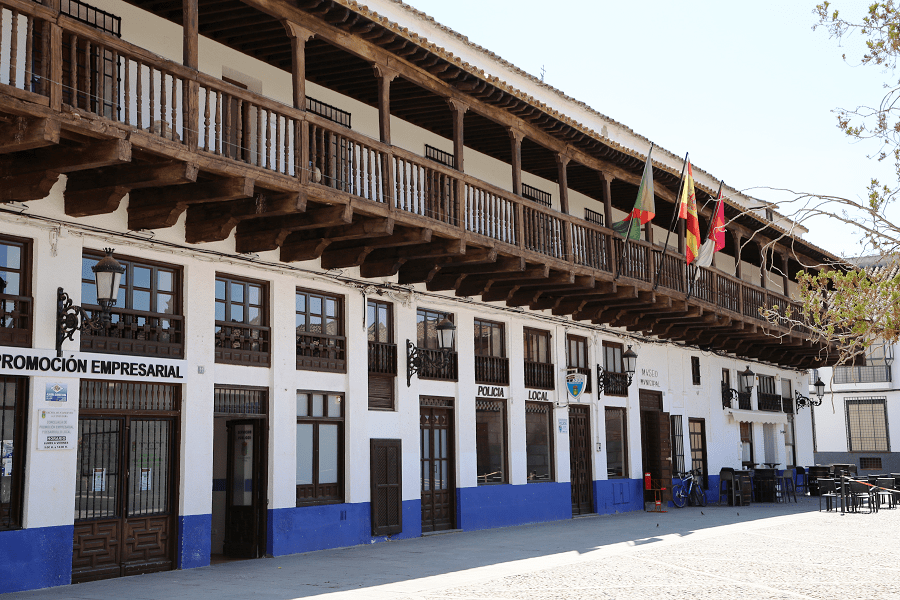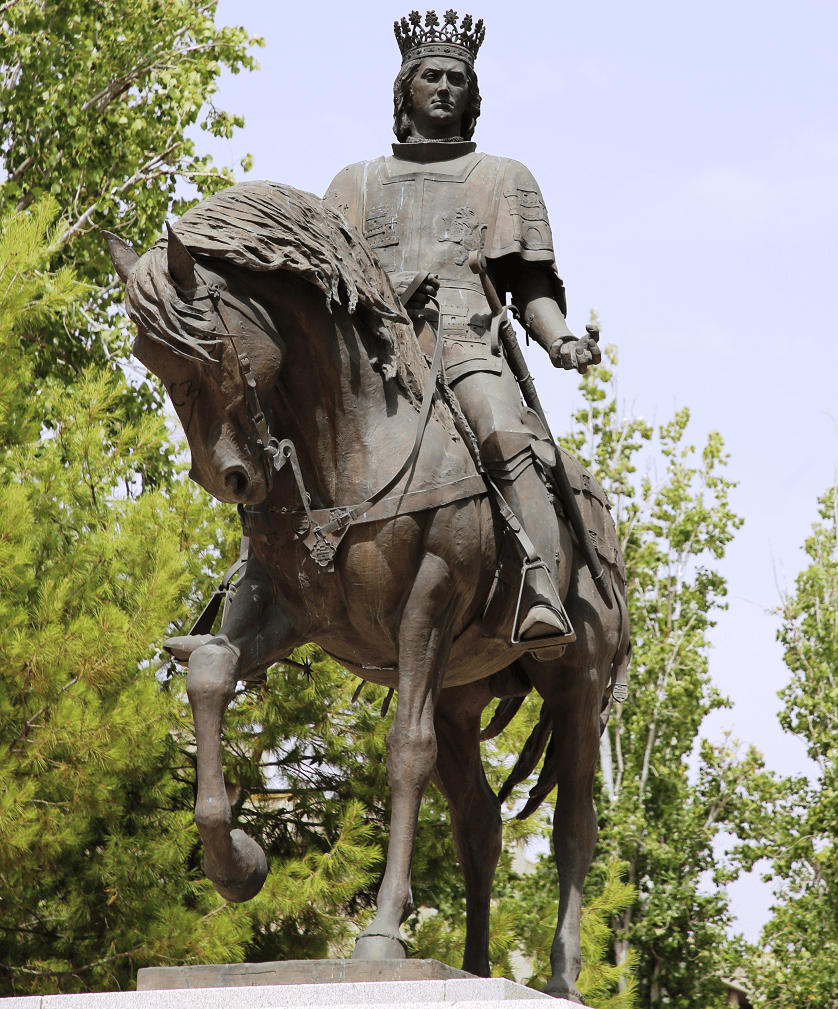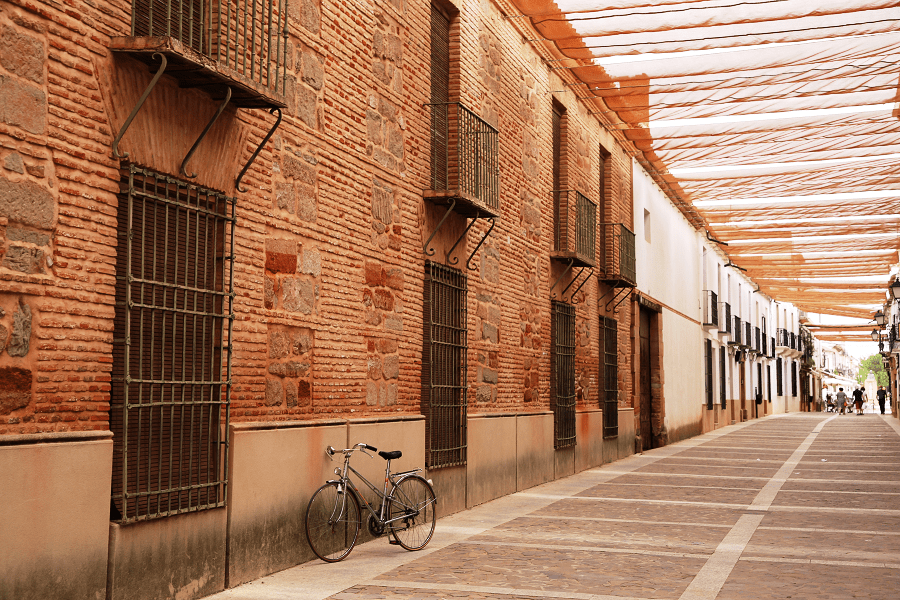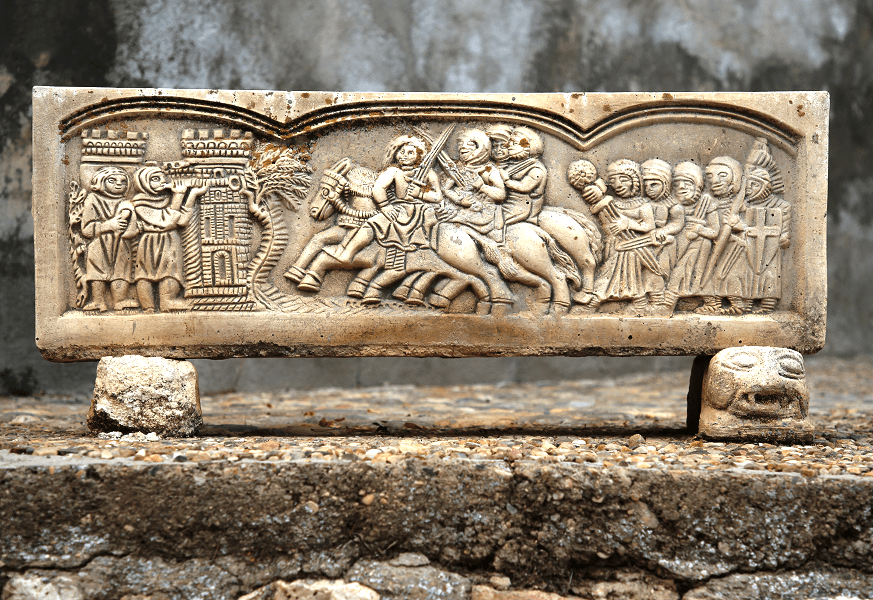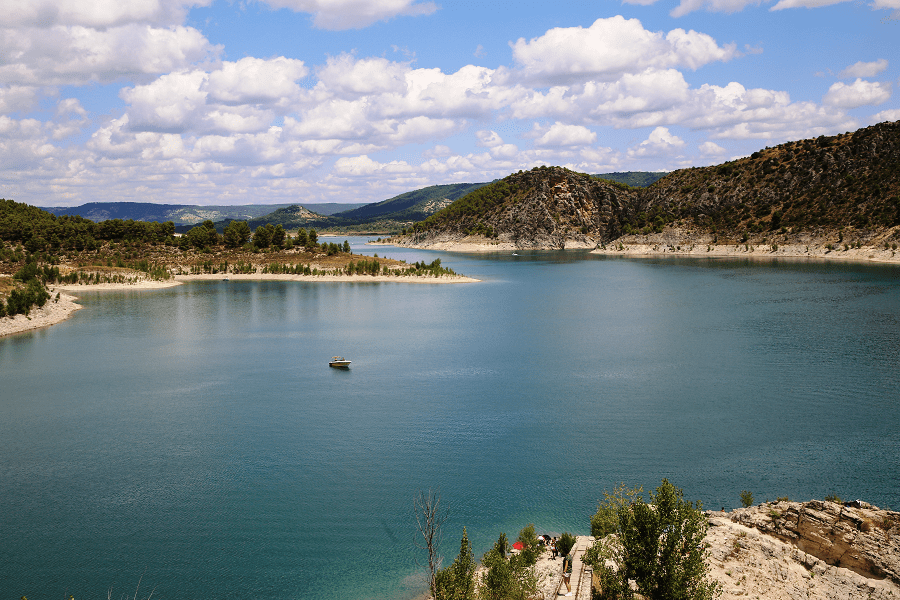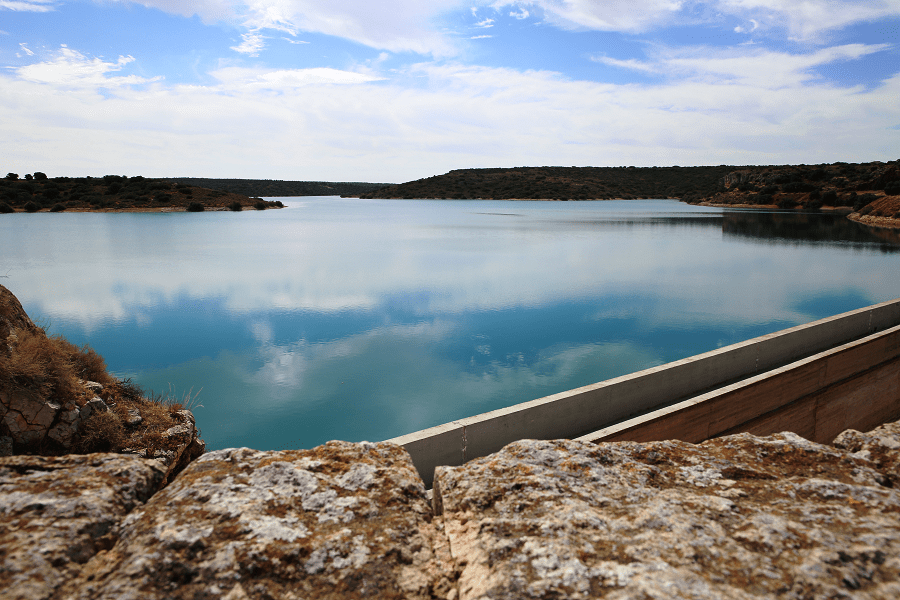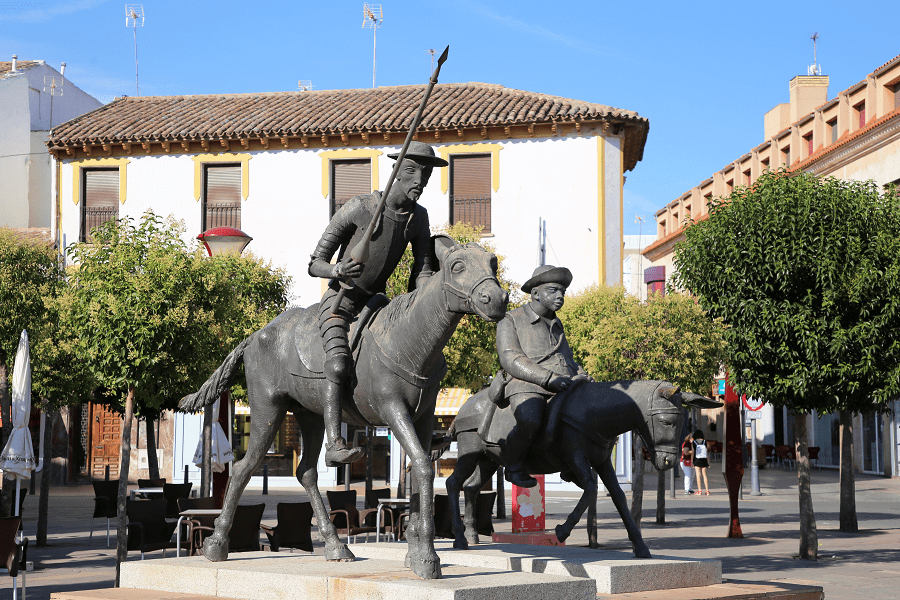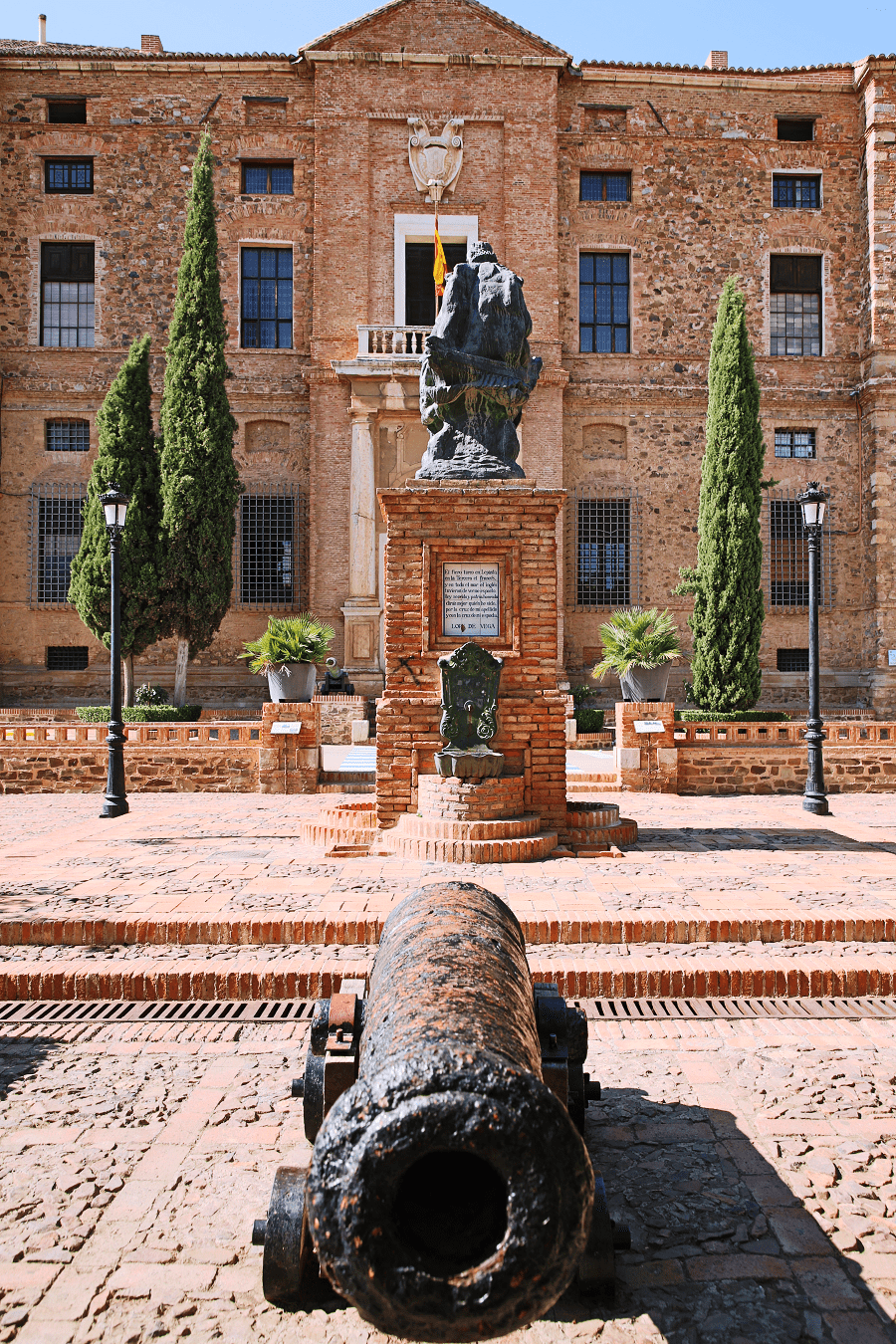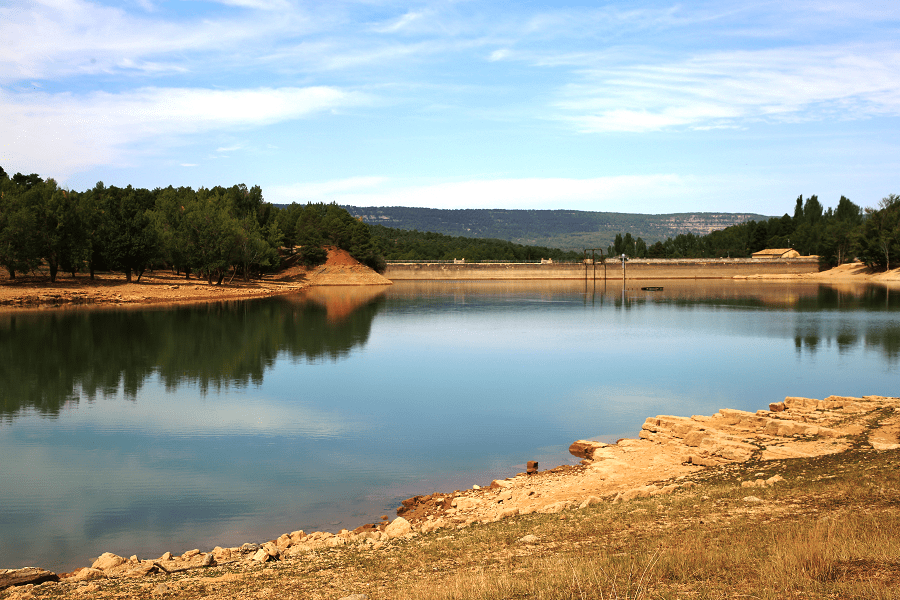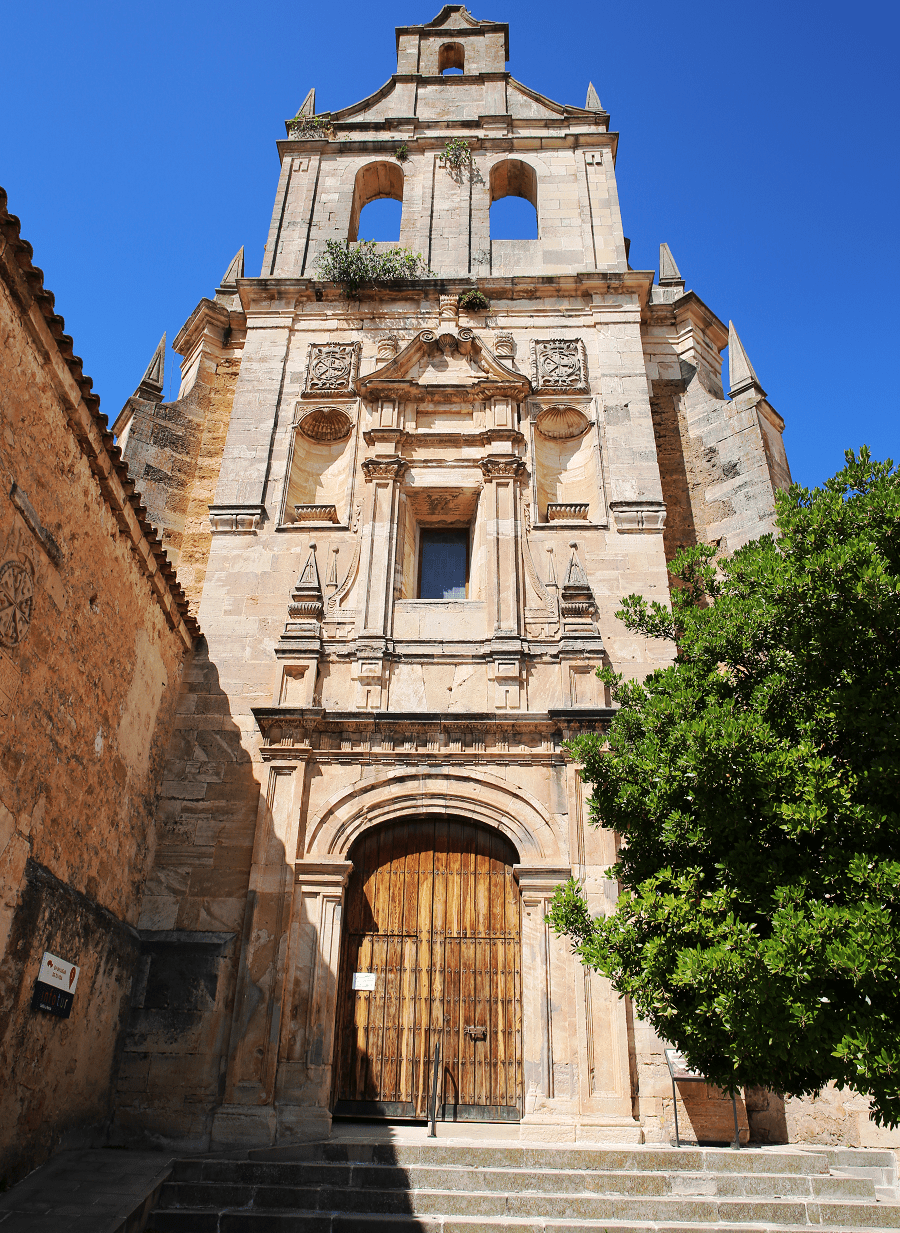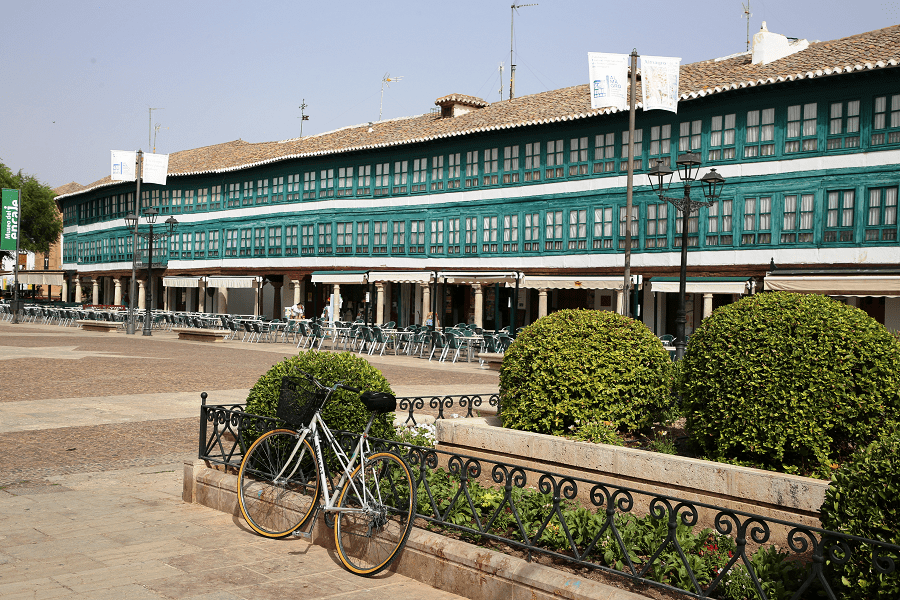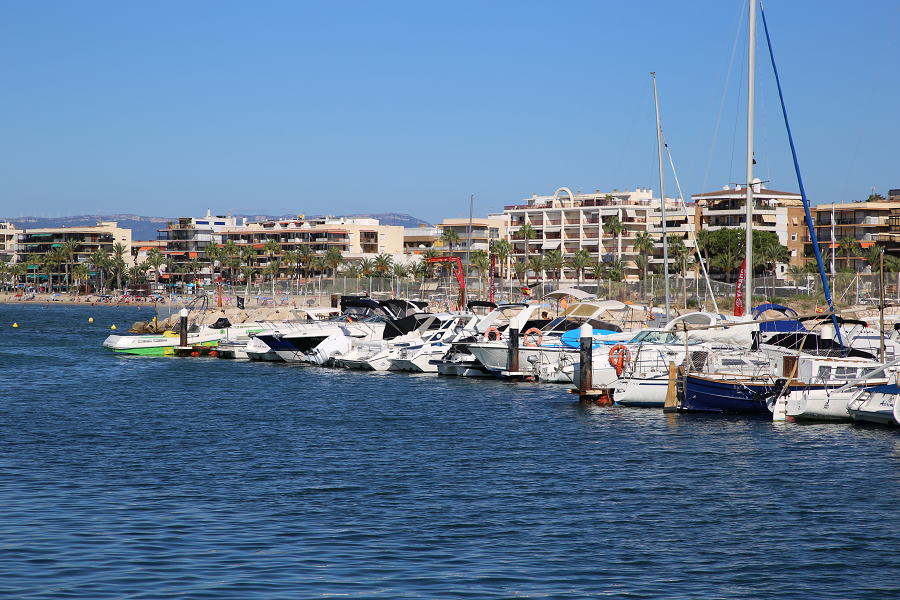Castilla–La Mancha, or Castile-La Mancha, is an autonomous community of Spain. Comprising the provinces of Albacete, Ciudad Real, Cuenca, Guadalajara and Toledo, it was created in 1982.
The government headquarters are in Toledo.
It is bordered by Castile and León community, Madrid community, Aragon community, Valencian community, Murcia community, Andalusia community, and Extremadura community.
It is one of the most sparsely populated of Spain’s regions. Albacete, Guadalajara, Toledo, Talavera de la Reina and Ciudad Real concentrate the largest urban areas in the region.
Tourism and Main Attractions
Spanish art of architecture has left beautiful monuments in Castilla-La Mancha throughout history, reflecting the peoples and cultures that have inhabited these lands.
In Roman times, monuments such as the Roman Circus of Toledo dating from the first century, and the Roman city of Segóbriga in the province of Cuenca, stand out.
Later, the Visigothic culture also left its mark on the community – the remains of the Basilica of Cabeza de Griego, in Cuenca, and the church of San Pedro de la Mata de Sonseca (Toledo) attest to this.
The importance of Toledo during the high Middle Ages is reflected in a multitude of monuments that have survived to this day, among which the church of Santa María de Melque, located near La Puebla de Montalbán, stands out.
In Ciudad Real there are works of Mudejar architecture such as the Puerta de Toledo and the church of Santiago.
During the long historical period that the Middle Ages occupy, fortifications and buildings of a religious nature were erected, which are surprising even today due to their large-scale dimensions. Among all, the Castillo de San Servando (Toledo) from the early 10th Century, and the castle of Belmonte in the province of Cuenca are impressive examples of religious architecture. .
The Cathedral of Sigüenza built between 1144-1326 and of Romanesque-Gothic character, the Cathedral of Cuenca (built between 1196 and 1257), and the Cathedral of Toledo (1226-1493) are the key buildings within Spanish Gothic architecture.
Later, and already in the 14th century, the castle of Almansa is a more refined example of defensive architecture. In another aspect, the monastery of San Juan de los Reyes (XV-XVI centuries) or the Palacio del Infantado in Guadalajara show Gothic-Elizabethan features. Also from this period are the Hanging Houses of Cuenca, or groups such as the main square of Alcaraz, that of Tembleque, or that of Villanueva de los Infantes.
The Spanish baroque has a clear exponent in the “transparent” of the cathedral of Toledo by Narciso Tomé, where sculpture and architecture are integrated to achieve a dramatic effect of light.
Later, we find neoclassical-inspired buildings in the 20th century, such as the Pasaje de Lodares de Albacete (1925) in the modernist style and designed by Buenaventura Ferrando Castells, or the Ciudad Real City Hall building (1976) in the Neoclassical and inspired by Flanders, the work of the architect Fernando Higueras.
In the 21st century, the most outstanding buildings are the Torre de Caja de Guadalajara in the capital of Alcarria, designed by the architects Solano & Catalán, the buildings of the Palacio de Congresos y Exposiciones de Albacete.
Popular architecture in Castilla-La Mancha has different aspects depending on the different geographical areas of the Community, as a result of the extension of the territory.
In the central area of La Mancha, the typical constructions of windmills that have gone around the world thanks to the work of Miguel de Cervantes (Don Quixote Route), stand out, or the silos, caves that served as storage functions.
Valverde de los Arroyos, a clear example of black architecture. Black architecture develops in the northwest of the province of Guadalajara, using slate as a fundamental element for construction. From its dark color comes the name of this type of building.
What to see?
Albacete province
Albacete – the largest and the most populated city in Castilla-La Mancha
Alcalá del Júcar and its castle
Carcelén castle dates from the 14th century
Chinchilla de Montearagón and its attractions
Chinchilla de Montearagón Castle is located in one of the most strategic places in Spain
Ciudad Real province
Alcázar de San Juan and its mills
Alhambra castle may have an Umayyad origin
Almagro – a historic-artistic complex
Calatrava la Nueva – a medieval castle and convent
Campo de Criptana and its windmills
Ciudad Real and its attractions
Doña Berenguela castle – a former Moorish fortress
Lagunas de Ruidera Natural Park
Palace of the Marquis of Santa Cruz – the headquarters of the General Archive of the Spanish Navy
Peñarroya castle dates back to 1198
Villanueva de los Infantes – National Historic Site
Cuenca province
Archaeological Park of Segóbriga
Belmonte castle – one of the most emblematic in Spain
Garcimuñoz castle and its architecture
Toba reservoir on the Júcar river
Uña lagoon – a part of the Serranía de Cuenca natural park
Guadalajara province
Almonacid de Zorita and its attractions
Entrepeñas reservoir and its water activities
Galve de Sorbe castle was built in the 15th century for the house of Zúñiga
Guadalajara and its attractions
Jadraque castle dates to the late 15th century
Monastery of Santa María de Monsalud – an old Cistercian monastery
Molina de Aragón and its castle – one of the biggest in Spain
Recópolis – an ancient city of Visigothic origin
Sigüenza – a historic-artistic complex
Torija castle first built by the Knights Templar in the 11th century
Zorita de los Canes castle was declared a Historic-Artistic Monument in 1931
Toledo province
Barcience castle dates back to the XV century
Casarrubios del Monte castle dates back to the 15th century
Castillo de la Vela was declared a historical monument of art in 1931
El Toboso – the homeland of Dulcinea, a character from Don Quixote de la Mancha
Guadamur castle was declared a historical-artistic monument
Escalona and its castle-palace
La Puebla de Montalbán and its attractions
Orgaz castle was built in the 14th century
Puñoenrostro castle dates back to the XIV century
Talavera de la Reina and its pottery craft
Transport and how to get to?
Railways
Renfe, Spain’s state-owned railway operator operates numerous trains throughout Castilla–La Mancha.
Long distance
Numerous long-distance rail lines (líneas de largo recorrido) pass through Castilla–La Mancha, most of them radiating out of Madrid. Some of these are high-velocity trains (Alta Velocidad Española AVE):
High velocity AVE trains
Madrid–Ciudad Real–Córdoba–Seville).
Madrid–Toledo
Madrid–Guadalajara–Zaragoza–Barcelona.
Normal Largo Recorrido trains
Alicante–Albacete–Alcázar de San Juan–Ciudad Real
Madrid–Ciudad Real–Jaén
Madrid–Ciudad Real–Badajoz
Madrid–Cuenca–Valencia
Madrid–Guadalajara–Soria
Madrid–Guadalajara–Arcos de Jalón
Madrid–Talavera de la Reina–Badajoz
Airports
Air transport is marginal in the region. Castilla–La Mancha has two airports, the Albacete Airport (no cargo transport and with an insignificant civilian use) and the Ciudad Real Central Airport, which was affected by the 2008 crisis and closed in 2012, although efforts have been pursued to reactivate the latter. Relatively close airports outside the region include those in Madrid, Valencia and Alicante.
Distance by car from Toledo to the main cities of Spain
To Madrid (Madrid community) 58 min (72.0 km) via A-42
To Barcelona (Catalonia) 6 hr 46 min (686 km) via AP-2 and A-2
To Valencia (Valencian community) 3 hr 42 min (369 km) via A-3
To Murcia (Murcian community) 3 hr 38 min (400 km) via A-30 and CM-42
To Seville (Andalusia) 4 hr 35 min (477 km) via A-4
To Merida (Extremadura) 2 hr 50 min (301 km) via A-5
To Zaragoza (Aragon) 3 hr 54 min (385 km) via A-2
To Valladolid (Castile and Leon) 2 hr 55 min (257 km) via N-601 and AP-6
To Santiago de Compostela (Galicia) 6 hr 18 min (668 km) via A-52 and A-6
To Oviedo (Asturias) 4 hr 55 min (514 km) via A-6
To Santander (Cantabria) 5 hr 8 min (523 km) via A-67
To Vitoria-Gasteiz (Basque community) 4 hr 22 min (426 km) via A-1
To Pamplona (Navarre) 4 hr 46 min (460 km) via A-2
To Logroño (La Rioja) 4 hr 14 min (397 km) via A-2
Main information
Area: 79 463 km²
GPS coordinates: 39°30′00″N 3°00′00″W
Language: Spanish
Population: 2 045 221
Currency: Euro
Visa: Schengen
Time: Central European UTC +1, in summer +2
Subdivisions
5 provinces, 919 municipalities.
Main festival
Castilla-La Mancha Day is the festive day of the Spanish autonomous community of Castilla-La Mancha. It is celebrated on May 31, commemorating the anniversary of the constitution of the Regional Courts for the first time in its history. The first time it was held was in 1984. At the event, the Gold Medals of the Region were awarded.



